Comparing New Balance vs Brooks running shoes is another breakdown of proprietary technologies, fit, and feel. Both brands are well loved and used because they make high quality running shoes for various running styles and foot types. Today we’ll compare models to help you find the best shoe for your workouts.
Both brands are known for their quality and offer a variety of models to suit different needs like overpronation, low arches, cushioning, and various styles of running.
I do admit to having a deep love for New Balance as I helped to create their first ever online Wear Test program back in my consulting days!
The Main Differences New Balance vs Brooks
New Balance and Brooks offer similar features and models for all kinds of runners, from the casual runner to extreme marathoner to the flat-footed or high-arched.
I break down the differences in more detail below, but here’s a quick overview:
New Balance Running Shoes
- Offers wider shoes than most brands
- Thicker midsole provides more stability
- Makes more shoes in the US than any other brand
- Also big in the athleisure market
Brooks Running Shoes
- Wider Toe Box
- Exclusively designs running shoes
- Science-driven to accommodate rather than correct gait
- Has more fun holiday styled shoes than any other brand (Christmas, 4th of July, Thanksgiving, St Pat’s)
New Balance vs Brooks Feature Comparison
Both brands have been around for a very long time and are leaders in running shoe design. They both offer various technologies to aid with comfort, support, stability, and cushion.
Where they differ most is in the fit.
The following breaks down each shoe based on the components buyers need to consider when purchasing a running shoe.
It’s gonna get a little TECHY…so you can just skip on down to the specific model comparison if you want, but personally if I’m shelling out $150 for shoes, I kinda want to know why.
Durability
The lifespan of shoes from both companies is fairly comparable.
- New Balance shoes have a life expectancy ranging from 300 to 500 miles, or three to six months, depending on your monthly mileage.
- Brooks shoes have a life expectancy ranging from 300 to 500 miles, or three to six months, depending on your monthly mileage.
Determining when to replace running shoes, of course, all depends on your gait, weight, and whether you run mostly on trail or road.
Breathability
New Balance uses what is called a Hypoknit upper which offers the moisture wicking and breathability you want in your long run shoe.
Across MOST running shoes, the only time you now won’t find them to be breathable is if you get to Gore-Tex shoes that are designed to be water repellent or water resistant.
Fit
New Balance is one of the few running shoes that offer wide widths and go up to a lot more sizes. This is one reason they are so popular among workers.
Note, they also offer 2A which is extra narrow. And like most brands, they have a shoe finder to help you decide what might be the best fit.
Additionally, their shoe numbering system actually means something!! The last 2 digits tell you about the type of shoe.
40 (Optimal Control):
Shoes in this category provide superior control, stability, cushioning and support for biomechanical needs, such as pronation or low arches (e.g., 940, 1540).
50 (Fitness Running):
For training on roads or for indoor workouts, the 50 series offers the combination of visual attitude and innovation with the responsiveness and power athletes need.
60 (Stability):
Designs that offer industry-leading stability to reduce pronation while also providing unparalleled cushioning and comfort (e.g., 860).
70 (Light Stability):
The perfect combination of stability and speed, all in a lighter, sleek profile designed for runners who train at a faster pace (e.g., 770).
80 (Neutral):
For high-mileage runners who require light shoes and the protection of superior cushioning (e.g., 1080).
90 (Speed):
For faster runners who want every advantage, including a superior ride and fit. The choice styles for professional and nonprofessional speed and distance runners (e.g., 890).
Brooks shoes have a wider toe box, which makes them a great choice for runners with wide feet or bunions. The brand recommends that buyers go up a half size from their everyday shoe.
Brooks does a great job with online fit, the Brooks shoe fit finder will give you an idea of what to look for in a running shoe when you do visit your local store.
 This is an older, yet still very USEFUL graphic from the Huffington Post.
This is an older, yet still very USEFUL graphic from the Huffington Post.
I forget we may not all know the lingo when talking about different components of the shoe and why they matter.
Cushioning
New Balance utilizes Fresh Foam and FuelCell foam depending upon the shoe. Both are designed to provide a lot of cushion without the weight. FuelCell is a nitrogen infused foam which provides additional softness and responsiveness.
Brooks uses two types of cushioning in their designs:
- DNA LOFT – Soft cushioning, that adapts to a runner’s profile, stride, and speed
- BioMoGo DNA – also adapts to runner’s profile, stride, and speed, providing a more balanced experience with a bit of spring.
Stability
New Balance utilizes a couple of tools to provide stability. The first is that similar to HOKA all of their shoes have a bigger platform, which naturally means more stability.
Then they have an S Curve to help with that side to side stability and a Ultra Heel that flares away from the ankle for comfort, while keeping your heel firmly in the shoe.
Brooks refers to individual running gaits as the “Run Signature.” Rather than “fix” the way someone runs, Brooks technology helps to stabilize your stride based on how you naturally run.
They put runners into two different categories: Neutral and Support.
Brooks GuideRails technology allows hips, knees, and joints to move naturally, offering support when needed. Neutral runners may only require them to kick in when their stride is off.
Read more on different types of running shoes to understand if you need stability >>
Affordability
The prices between the two brands are fairly comparable. New Balance prices range between $80 to $130, while Brooks start at a slightly higher price at $100 to $160.
The most popular models for both brands are priced toward the higher range. Carbon fiber shoes and often trail shoes will go beyond those rates.
You’ll notice that every brand offers a range and this is indeed due to a difference in technology and where they sell the shoe. They know that the big box store can sell the shoe with less in it, while the local running store needs to be best for dedicated runners.
Brooks Vs New Balance Running Shoe Models
Now that you know more about each brand, let’s look at their top models in each of the main categories. There’s no winner declared here because all are great shoes, it’s just about which one is best for your foot.
Did you notice I even said the brands in reverse order this time…seriously no favorites, I have run in both brands many different times over the years.
Stability Running Shoe
👉Brooks Adrenaline GTS 23
The brand’s most popular road running shoe (GTS stands for go-to-shoe) just turned 23 and comes in a swath of colors. This supportive shoe is best for a medium to high arch, and is part of the cushion line.
This was one of the very FIRST shoe brands that I bought at a running store! I thought it was so incredibly cool my name was on the shoe…ha!!! But yes they were super duper bright white (as you’ll see below). I also bought stability because I was told I needed it…but I’ve beaten this topic, many runners don’t.
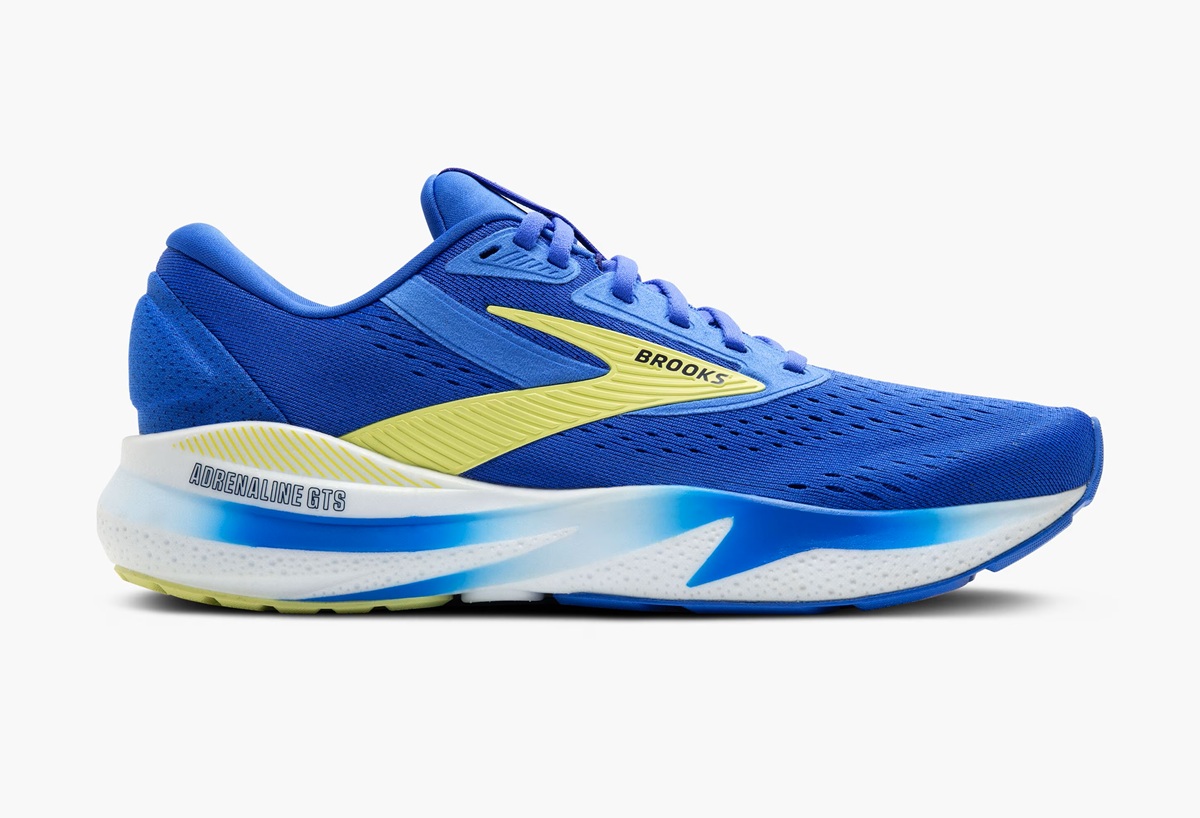
This shoe does feel firmer, which is normal for a stability shoe with the guiderails that are trying to prevent your foot from falling inward.
It’s also a shoe I recommend for runners dealing with Plantar Fasciitis because it’s got a high arch and provides a lot of support.
- Weight: 10.2 oz Men’s, 9 oz Women’s
- Heel Drop: 12 mm
- 17 colors available
- Available in Narrow in select colors
- Available on BrooksRunning.com, Zappos and retail stores for $140
👉Fresh Foam 860 V 14
With their newest Fresh Foam X it makes for a lighter stability shoe, while still offering the motion control and responsiveness you need. When a shoe is too plush, it’s hard to provide the stability in the arch that prevents your foot from falling inward.
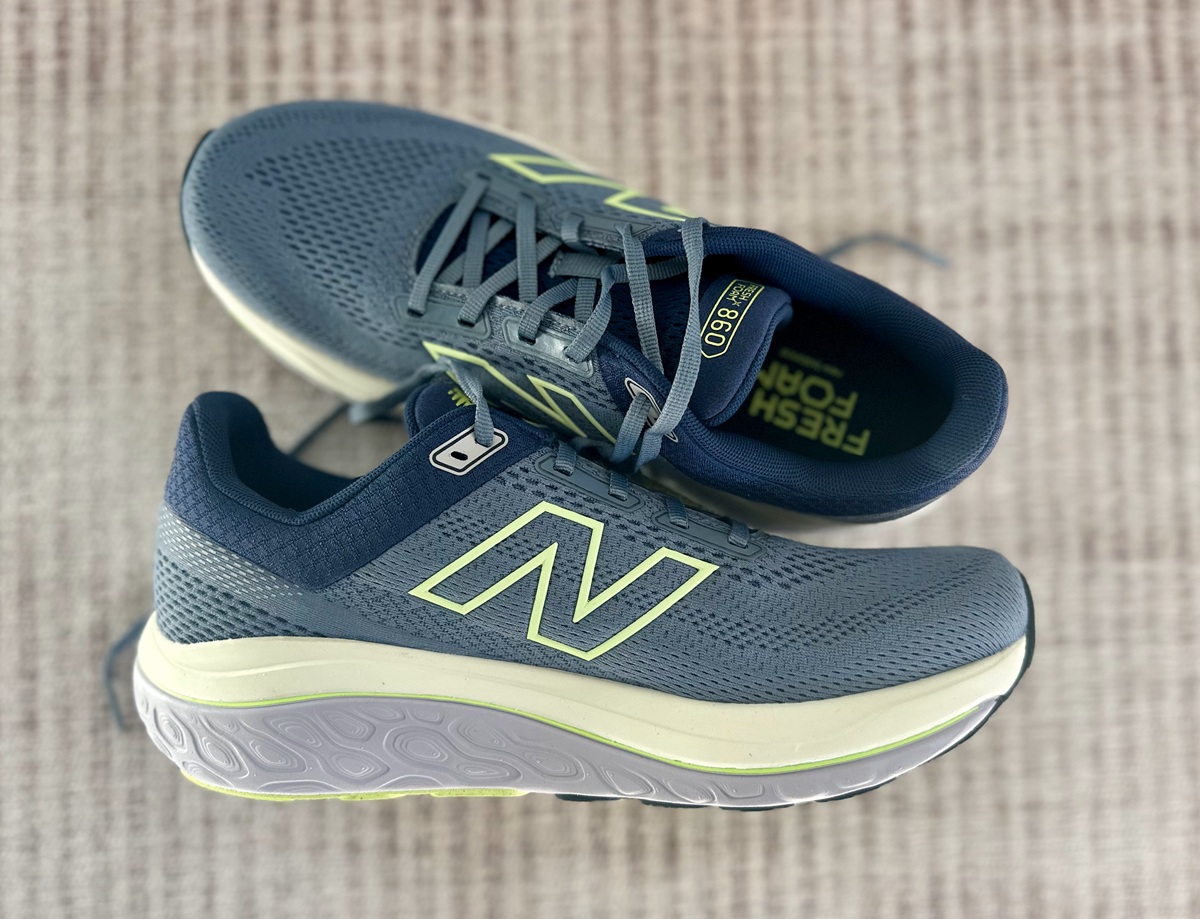
The New Balance 860 is a stability shoe designed for runners with overpronation issues. The shoe comes with a medial post on the inside of the shoe, which helps to prevent excessive inward rolling of the foot, and provides added support to the arch. It also has a dual-density midsole that offers excellent cushioning and support to the feet, making it perfect for long-distance running.
The upper part of the shoe is made of engineered mesh, which ensures proper breathability and comfort. This shoe is suitable for runners who require additional support and stability to maintain proper foot alignment while running.
It also uses their Ultra Heel for additional locked and loaded feeling in the shoe.
- Weight: 10.8 oz Men’s, 8.7 oz Women’s
- Heel Drop: 8 mm
- Available in core and seasonal colors
- Available in narrow, wide and extra wide (in limited colors)
- Available on Newbalance.com for $140
- Check out our full review of the New Balance 860v14 here >>
Neutral Running Shoe
👉Brooks Ghost V 17
The change our team is most excited about is in the heel to toe drop.The Ghost 17 is a neutral running shoe now with a 10mm heel to toe drop.
It’s not a huge difference, but if the 12 mm felt too high, you’ll really appreciate this. Plus, the lower drop will make a difference in potentially reducing knee pain or IT Band issues that often pop up with newer runners.
The second change that you may notice if you’ve worn previous models is from the cushion in the midsole. Brooks still uses its DNA Loft v3 foam but added more nitrogen in the forefoot (3mm) and heel (1mm) for a more cushioned and snappy feel underfoot.
The increase in stack height is actually why they changed the heel drop. It’s allowing for more stability in the shoe and ensures that you aren’t sinking to the ground as they keep adding cushion.
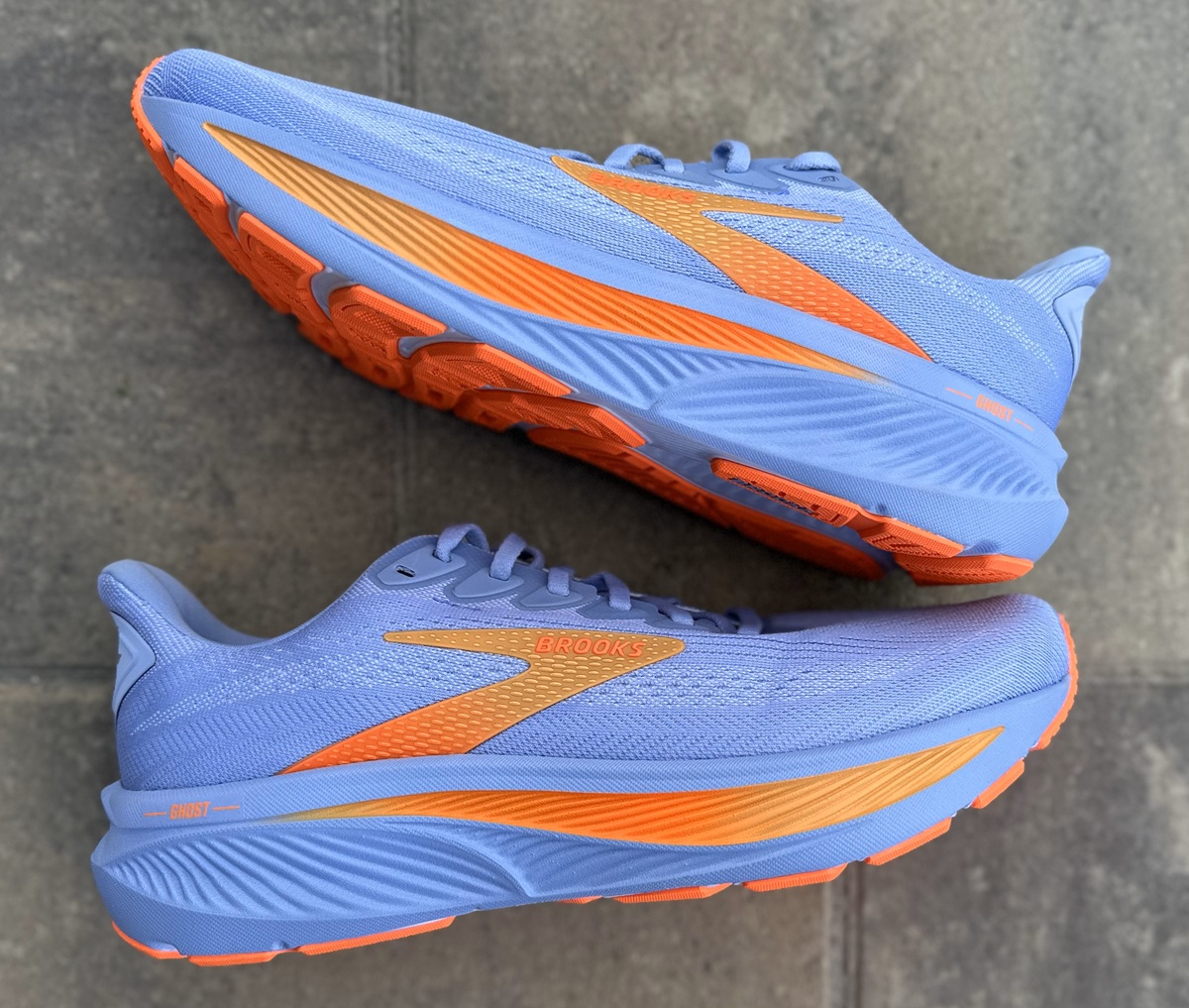
The Brooks Ghost 17 is a mix between soft and firm, like a shoe that you’d throw on when you want to hit party paces, but you also want to be able to get down to business.
They kept the same DNA Loft v3 foam but added more nitrogen to the heel and forefoot to give a little bit more of a pop and softer feeling underfoot. Now, there’s not enough pop that you’d grab these for a speed workout, or if you’re looking to run something like a fast 5k.
- Heel toe drop: 10mm
- Weight: 9.0 oz women’s, 10.1 oz men’s
- Available in six colors
- Available in Wide, Narrow and Extra Wide in select colorways
- Available from Brooksrunning.com for $150
- See our full review of the Ghost 17 here >>
👉Fresh Foam 880 v 15
While some runners are flocking to carbon plated shoes, we simply don’t want those as our every day trainers. We want something that is solid and dependable like this neutral shoe that also has a great wide toebox, allowing you to get full power out of those feet.
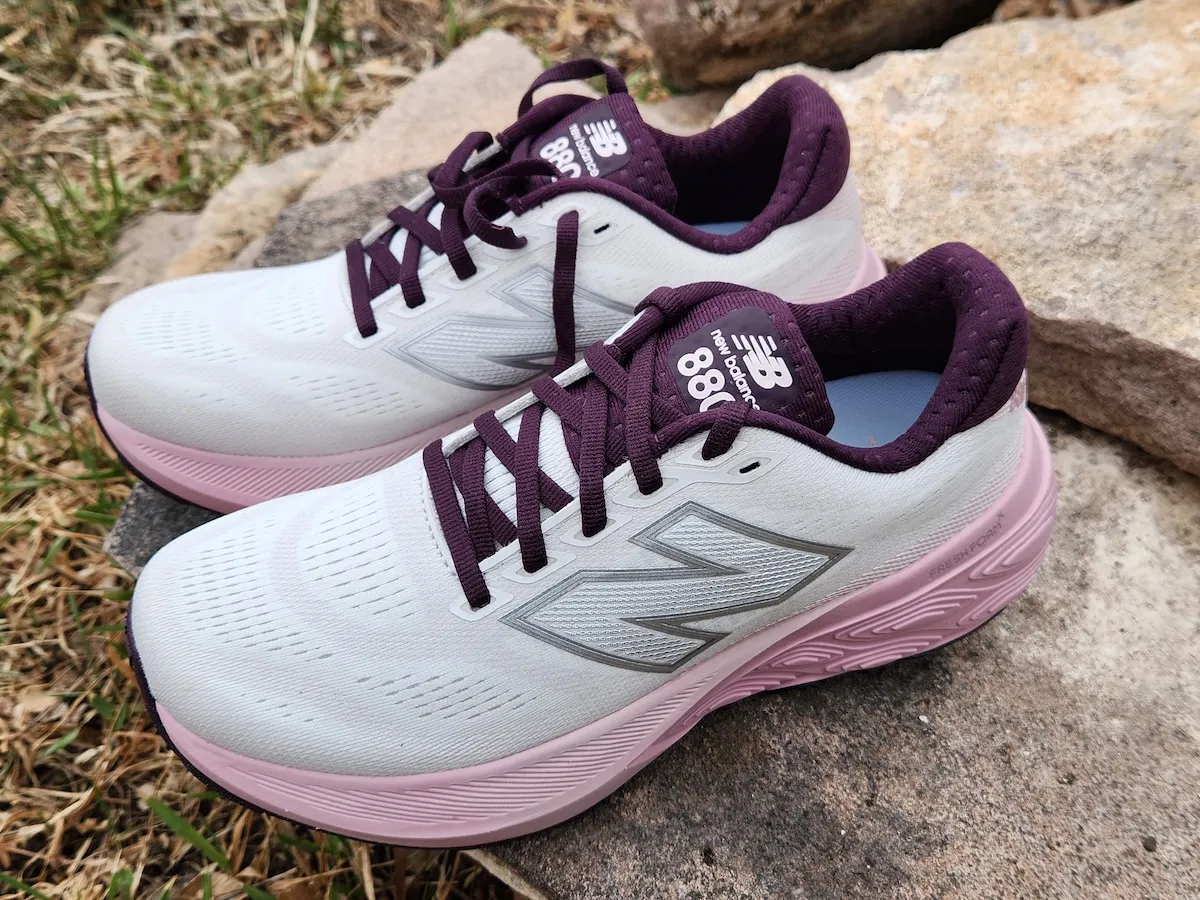
It’s going to have enough cushion for long runs without being overly plush and still providing just a hint of stability with the bigger platform. I can concur from my running in fresh foam that you absolutely notice the cushion, but it’s still a solid shoe.
The upper part of the shoe is made of engineered mesh that ensures proper breathability and comfort. This shoe is suitable for runners who require moderate support and cushioning for their runs.
- Weight: 10.7 oz Men’s, 8.4 Women’s
- Heel drop: 6mm
- Available in 7 colors
- Available in several widths: narrow, standard, wide and x-wide
- Available on newbalance.com for $139.99
- Read our full review of the Fresh Foam 860 here >>
Cushioned Running Shoe
👉Brooks Glycerin 22
The Glycerin remains one of Brooks most loved running shoes. I told you I ran a marathon in it! It‘s a great all–around running shoe, providing great cushioning for a variety of running distances.
Brooks slightly changed things and use their DNA tuned foam underfoot. This EVA foam is the most durable and allows for a lot of softness. With their DNA tuned technology they can change the softness in different areas of the shoe based on usage type. In this case, a go to daily trainer.
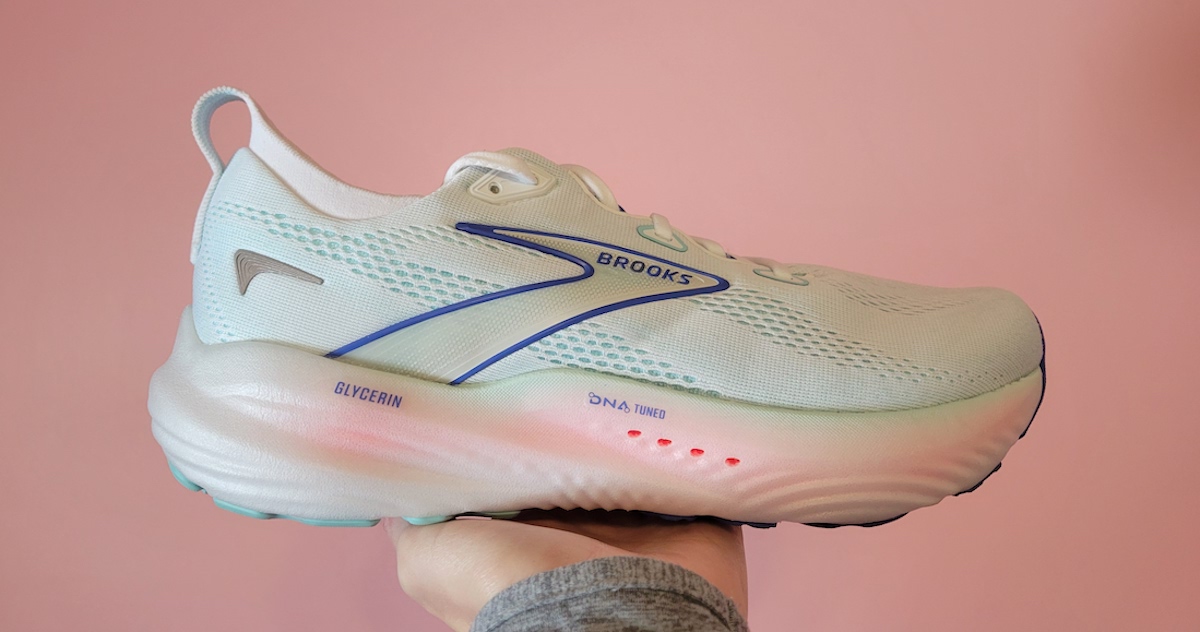
- Weight: 10.2 oz Men’s, 9.1 oz Women’s
- Heel Drop: 10 mm
- 9 colors available
- Available in Medium, Wide and Extra Wide (wide and extra wide widths available in select colors)
- Also available as the very popular Glycerin GTS for stability lovers
- Available on www.brooks.com for $165
- Check out our full review of the Brooks Glycerin 22 here >>
👉NB Fresh Foam 1080 V14
Listen, I like a good cushioned shoe and this one fits the bill. It’s become one of my go to daily run shoes.
I’ve actually gone through many pairs of the 1080’s for the last few years. And while the increase in cushion means it’s lost some of the speediness I previously loved, it’s just changed places in my line up because I still really enjoy it.
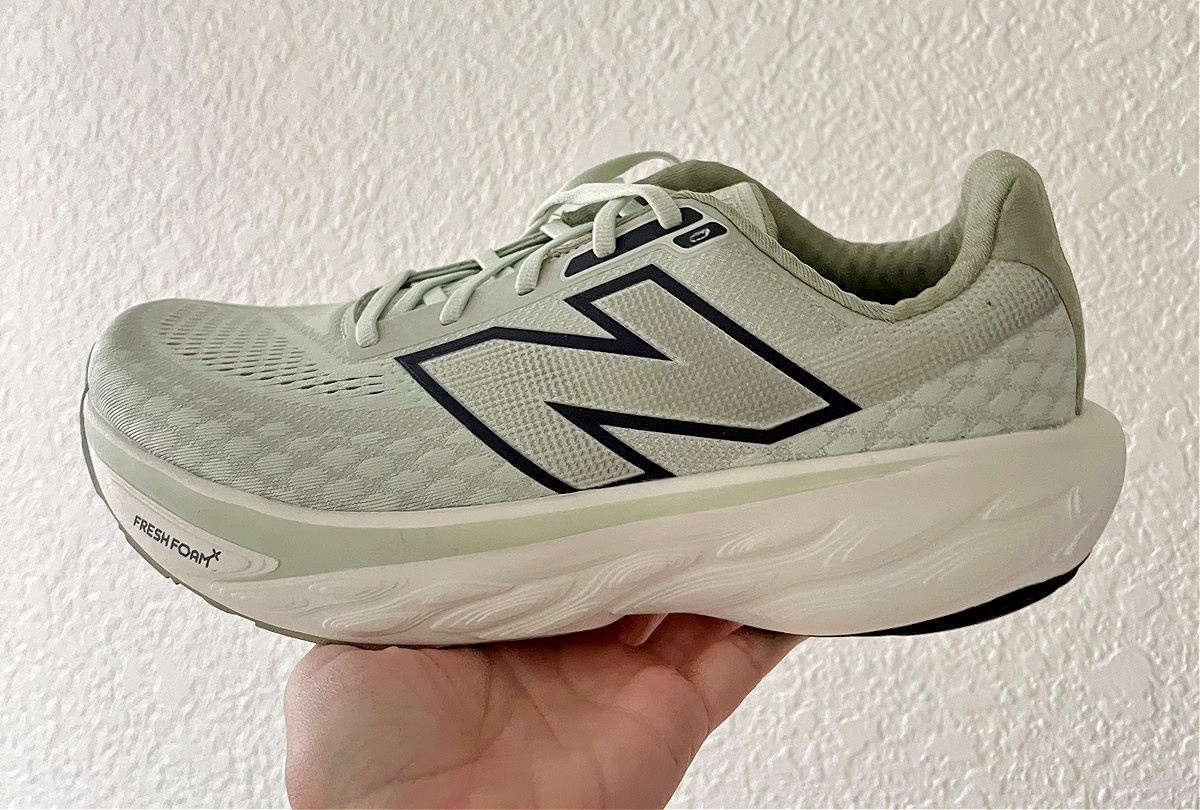
The New Balance Fresh Foam X is just a winner for me. I’ve always found it to do well for high mileage without breaking down and it just feels good underfoot.
The most recent version 14 of the shoe is slightly lighter (about 1 oz less) and has the knit upper, which makes the shoe simply feel like it’s hugging your foot a bit more. The stack height has also increased, but thus far I haven’t noticed that as an issue, so it remains a shoe I really enjoy.
The Fresh Foam midsole provides excellent cushioning and shock absorption, making it perfect for runners who enjoy long-distance running. Remember this isn’t a plush shoe, but cushion that still responds. The upper part of the shoe is made of Hypoknit, which is a soft and breathable material that provides a comfortable fit.
-
- Heel Drop: 6mm
- Weight: 10.5oz Men’s, 8.3 oz Women’s
- Available in 14(!!!) colors
- Available in wide
- Available on New Balance and Zappos for $165
- See my full review of the New Balance 1080 v13
Trail Running Shoe
👉Brooks Caldera 8
It’s been a few years since I’ve run in this particular model, but I really enjoyed it at the time. I’ve just been testing a lot of other shoes!
When you first look at these shoes, your eyes are probably immediately drawn to the amount of foam. But don’t worry, this doesn’t translate to the Caldera 8 being a super squishy ride. The cushion is there to help protect your feet from rugged trails. But the trade-off is that it’s missing some of that responsiveness to help you pick up the pace.
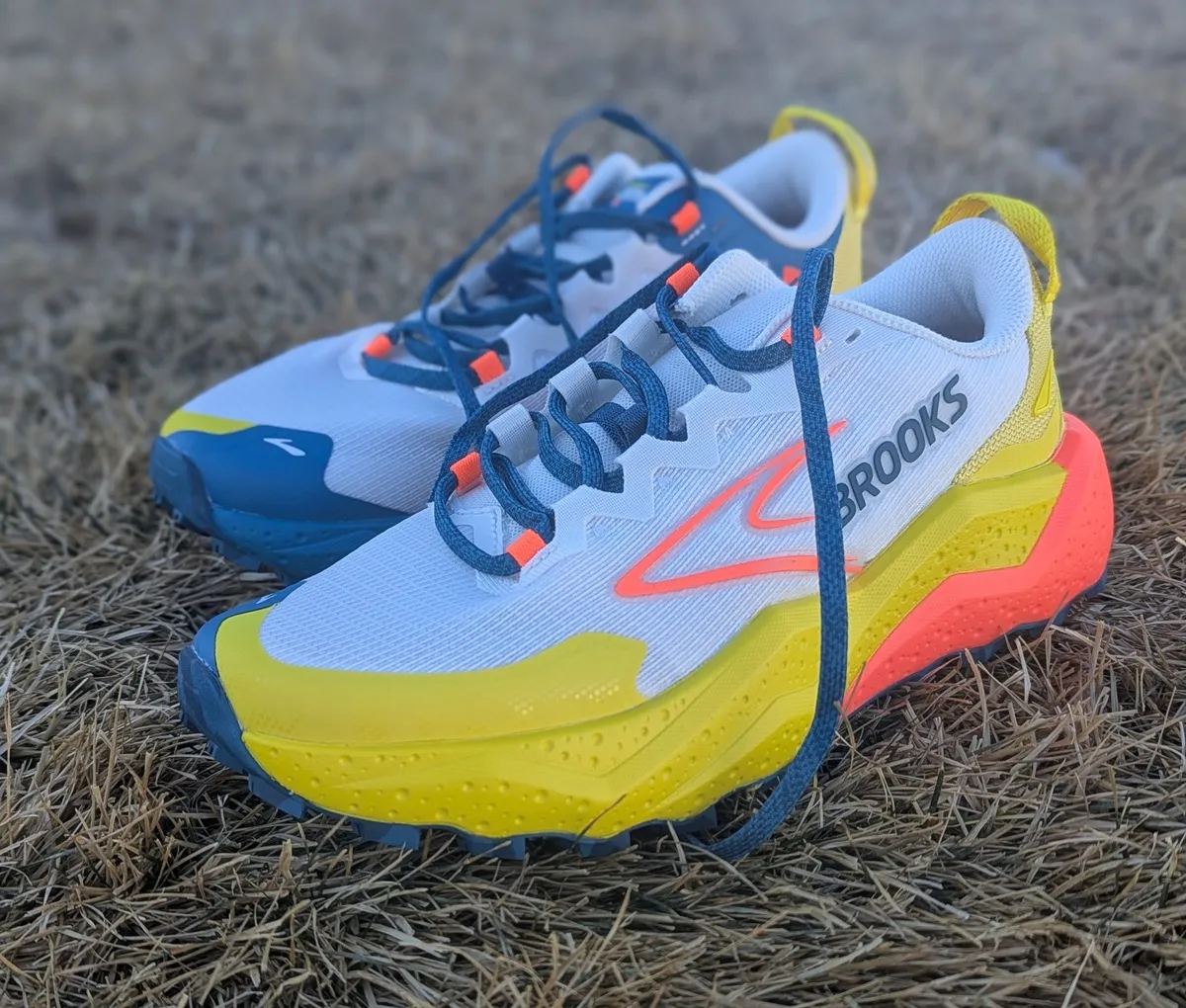
The DNA Loft v3 foam brought the cushion but was still firm and bouncy enough to feel connected to the trail. With all the cushion the Caldera 8 was still stabilizing, flexible, and responsive enough to handle the most poorly chosen line through roots and rocks.
This is a perfect match for trail and ultra runners looking for a little extra cushion while spending lots of time on the trails.
- Weight: 14.4 oz Men’s, 9.3 oz Women’s
- Heel drop: 6 mm
- Available in 2 colors
- Not available in wide
- Available from Brooksrunning.com for $150
- Read our full review of the Brooks Caldera 8 here >>
👉New Balance Fresh Foam Hiero
I LOVE me some good cushion and here you’re getting that along with the Vibram outsole that is going to really grip the ground.
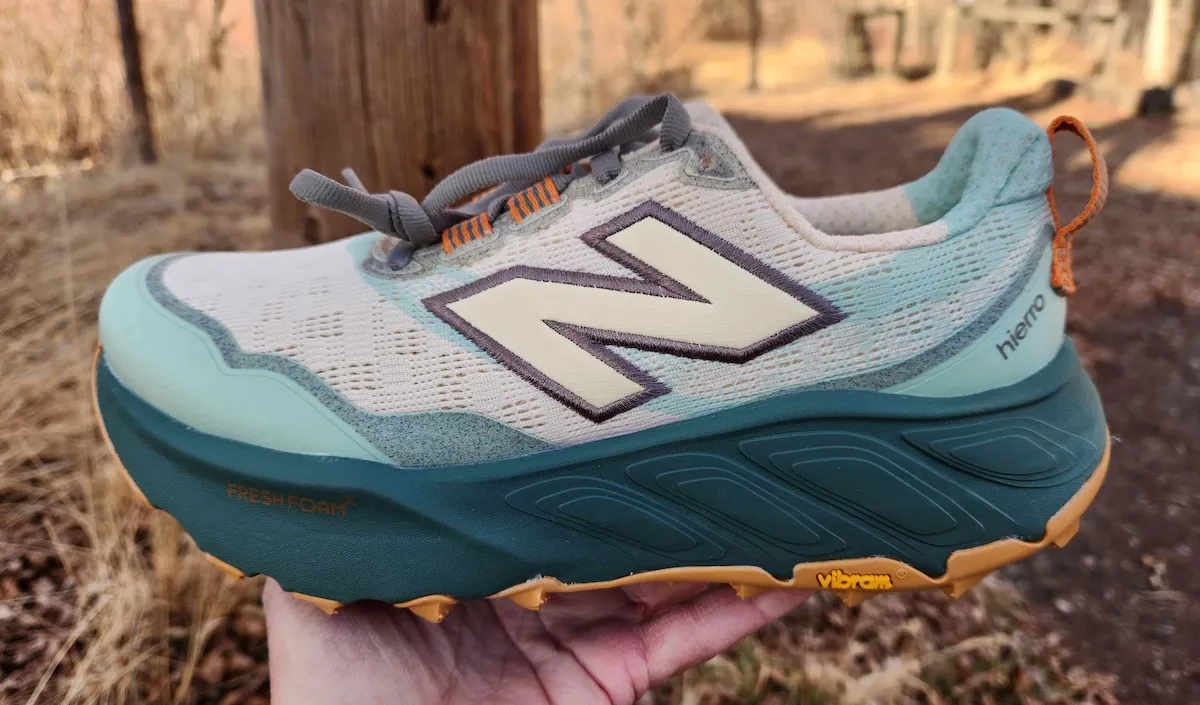
- Weight: 10.3 oz Men’s, 8.3 oz Women’s
- Heel drop: 4mm
- Available in 3 colors
- Available in wide and x-wide
- Available on Newbalance.com for $155
- Read our full review of the New Balance Hierro v9 here >>
Carbon Fiber Plate Shoes
Are they cool new technology, yes. Do they last as long as your other shoes, nope.
So if you want to test these out use them for speed work and then race day!
Watch my detailed video on how Carbon Fiber Shoes work.
👉Brooks Hyperion Elite
The Brooks Hyperion Elite is a lightweight, high-performance running shoe designed for speed and efficiency. It’s doesn’t have a full solid plate like we see in other Super Shoes and the reasoning behind that is both to keep the shoe lighter and only provide stability to the cushioning not dampen it.
SpeedVault Race+ plate has been “fine tuned” so that the plate is actually different based on the size of the shoe and thus meeting the needs of that runner. The larger the shoe, the stiffer the plate in essence.
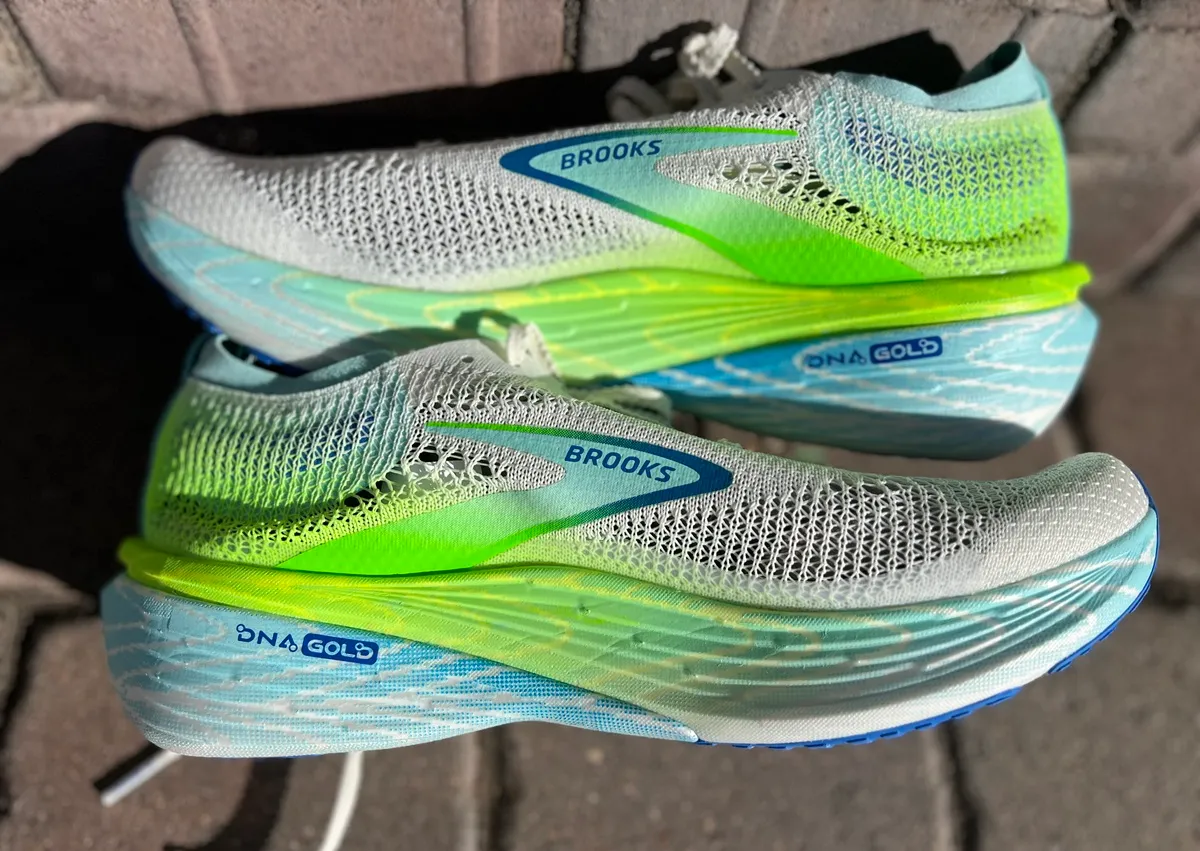
Now they are using what they call DNA Gold 100% Super Critical PEBA foam, instead of Super Critical EVA. This helped to drop an entire oz of weight from the shoe, but more importantly changed the feel underfoot.
- Weight: 7.4 oz men’s 10.5 (Unisex sizing)
- Heel drop: 8mm
- 1 color available
- Not available in Wide
- Available at BrooksRunning.com for $250
- Check out our full review of the Brooks Hyperion Elite 4 here >>
👉New Balance FuelCell Super Comp Elite v4
The SuperComp Elite is New Balance’s high-performance carbon-plated racing shoe, designed for long-distance runners seeking a combination of speed, responsiveness, and cushioning.
The shoe boasts an eye-catching color scheme and distinctive geometric design, as well as easy rocker shape. And the midsole is THICK, made of peba foam (more on that in a bit), layered around a thin carbon fiber plate.
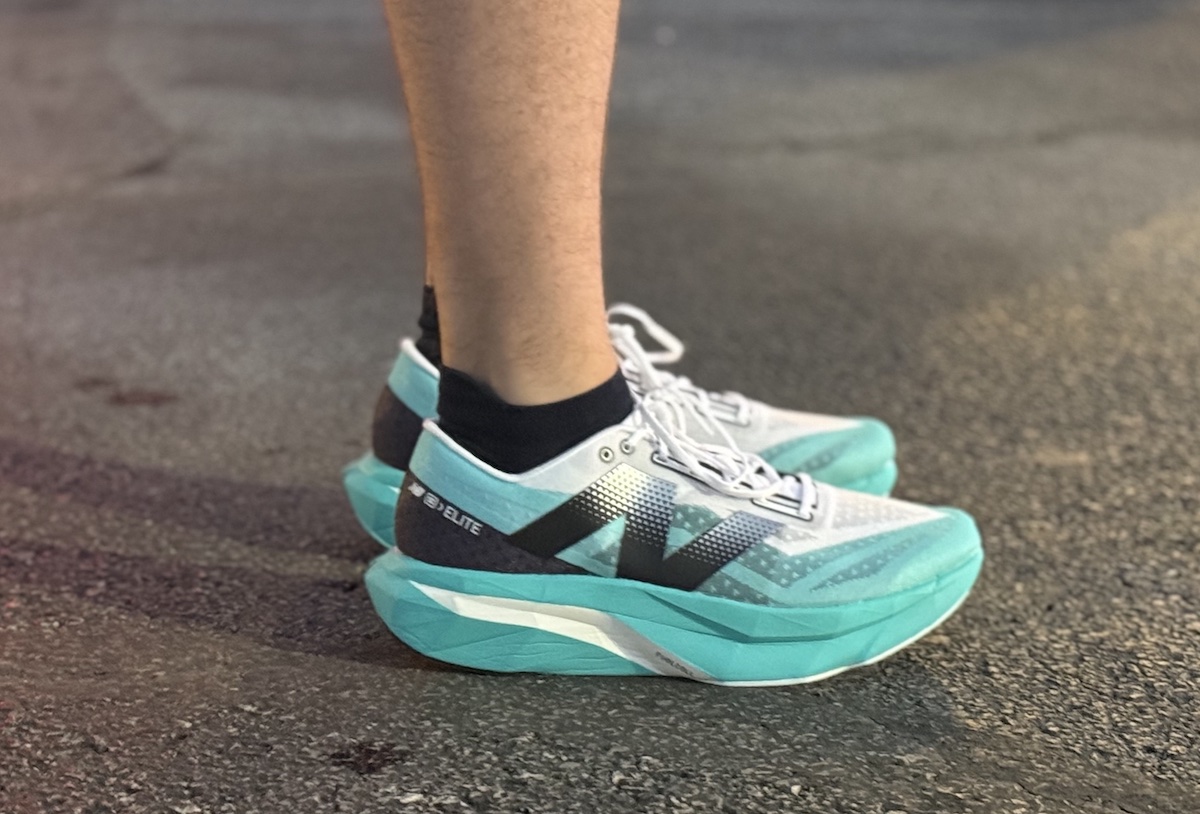
While it doesn’t have the bouncy feel common to other super shoes, the SuperComp Elite does offer remarkable comfort not found in its counterparts. If you’re looking for a cushioned and speedy plated race day shoe for a half-marathon and beyond, the SuperComp Elite should be your new running mate.
- Weight: 8.1 oz (Men), 7.2 oz (Women)
- Heel Drop: 4mm
- Available in 1 color
- Available in wide
- Available at newbalance.com for $250
- Read our full review of the Fuel Cell SuperComp Elite v4 here >>
More About New Balance
New Balance actually started in 1906 as an arch support company! But their focus on feet is one of the reasons they do offer more sizes and widths than most other brands.
And that’s exactly what the Boston based company focused on until 1960. Athletes had begun using the arch supports and they decided it was time to venture in to sneakers.
The Trackster was the first shoe with a rippled outsole that provide additional traction. It caught on as a track and cross country shoe regionally.
But in 1976 the company released it’s first shoe with the well known N logo on the side and it was a success. They stuck to their goal of providing shoes for a variety of feet and took advantage of the 80’s running boom.
More About Brooks
Believe it or not, Brooks started out in 1914 making ballet slippers and bathing shoes. Since then, they have made everything from baseball and football cleats to roller skates.
It wasn’t until Frank Shorter won the marathon at the 1972 Munich Olympics that Brooks considered limiting its focus. The first running shoe debuted in 1974 and their most popular running shoe, the Adrenaline GTS first hit the market in 1999.
In 2001, Brooks decided to focus solely on running.
They introduced the Transcend in 2013, a shoe that used new biomechanics technology to create a GuideRails technology, allowing runners to run naturally without trying to correct their gait.
The Seattle-based company is also well known for its commitment to sustainability and giving back. Brooks donates time, gear, and money to companies that align with their values around diversity, equity, and inclusion and staff receive paid annual volunteer time.
How to Choose Brooks or New Balance?
Brooks and New Balance are two extremely well known running shoe brands, but more important than brand is the fit of the shoe.
Your gait and feet will change over time and you may need to change shoes.
This is also why I recommend rotating through several pairs of shoes at once.
And remember, just because these are two of the most well known brands on the market, there are still plenty of other shoe brands to select from if neither New Balance nor Brooks has the right shoe for you.
Keep in mind that shoe design can change, even with the same model, so always assess how the shoe fits every time you replace a pair.
For more help selecting the right shoe for you, don’t worry, I’ve got you:
- Best Trail Running Shoes
- Top 5 Marathon Running Shoes
- Asics vs HOKA
- ASICS vs Brooks
- Best Running Shoes
Other ways to connect with Amanda
Instagram Daily Fun: RunToTheFinish
Facebook Community Chatter: RunToTheFinish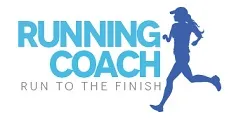
Sign Up to Receive a Weekly Newsletter with Top Running Tips and Laughs

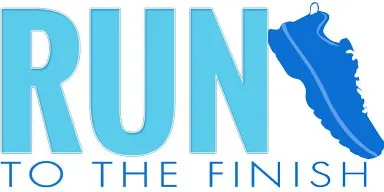
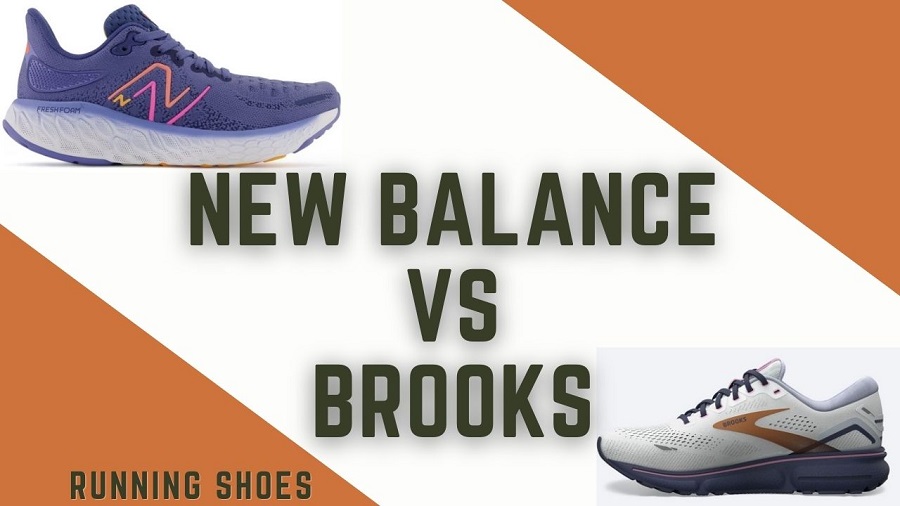


 5 Best Hoka Walking Shoes for Standing & Walking All Day (From A Trainer)
5 Best Hoka Walking Shoes for Standing & Walking All Day (From A Trainer)
GTS actually stands for Go To Support. Love the Brooks shoes. I have found them more durable than New Balance .